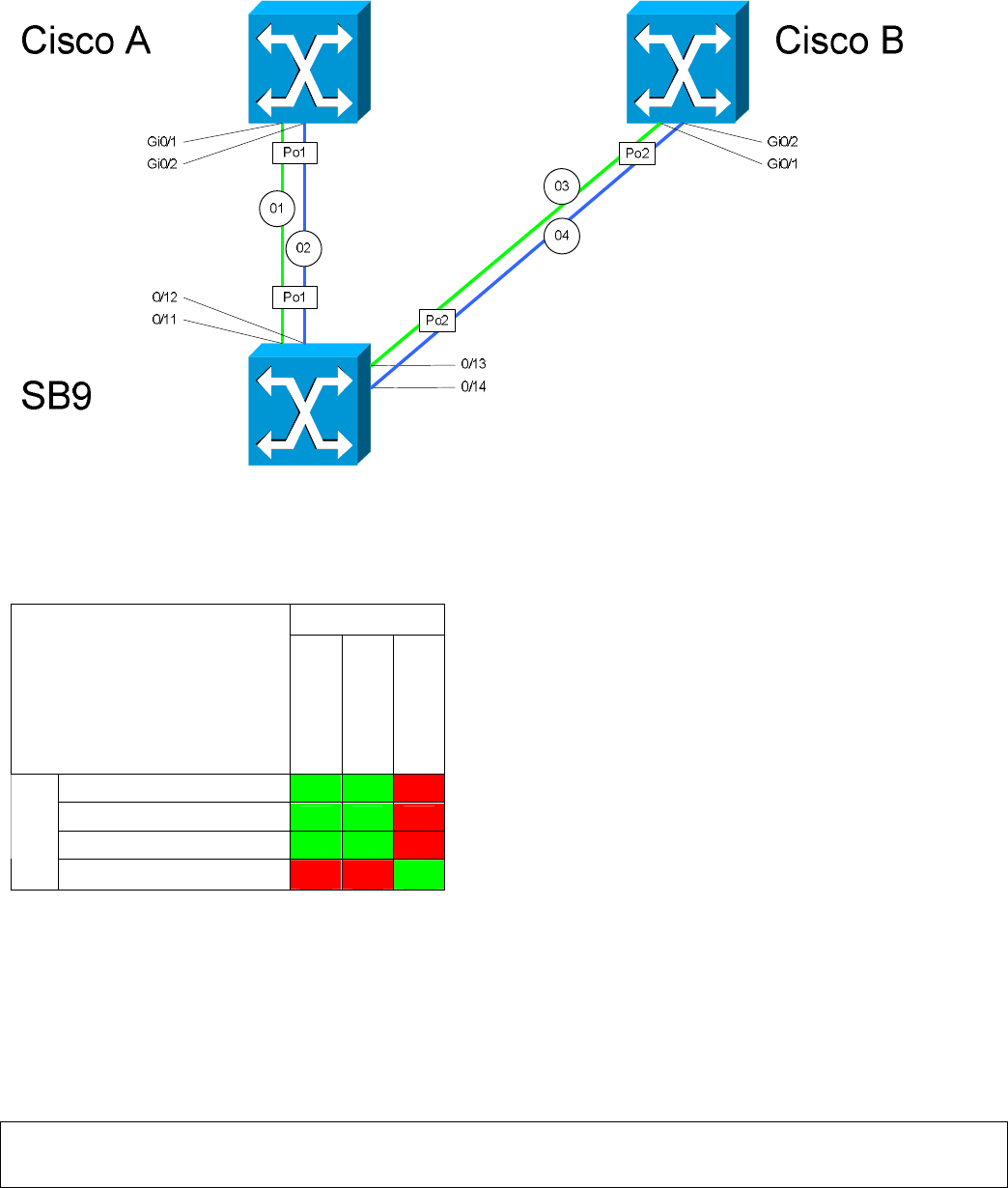
White Paper Issue: October 2006 Integration of BX600 SB9 Switches in Cisco Networks Page 5 / 47
2.2 Port Aggregation
2.2.1 Introduction
You will usually need more than 1 Gbit when connecting an SB9 switch in a datacenter. In this case two or more links are set up
to form a port-channel, also known as a Fast Ethernet Channel (FEC) or Gigabit Ethernet Channel (GEC) in Cisco networks.
Figure 1 shows a typical uplink configuration for an SB9: One port-channel connects to Cisco switch A and a second one
connects to Cisco switch B. Each port-channel is formed of two links running with 1000 Mbit in full duplex mode. The
redundancy mechanisms between these links will be discussed later. In principle, port-channels can be configured statically or
using a port aggregation protocol. Cisco supports LACP as specified in 802.3ad and their proprietary PagP, while the SB9
supports LACP as specified in 802.3ad.
Using static or LACP dynamic configuration, you can form up to six GE links between the SB9 and one other switch.
Figure 1 : Typical uplink configuration for SB9
Table 2 shows the possible combinations of port-channel settings between SB9 and Cisco switches. The combinations marked
red are very risky and would lead to networks loops.
SB9
No Channel
LACP
Static
No channel OK
OK
!!!
Active OK
OK
!!!
Passive OK
OK
!!!
Cisco
On !!! !!! OK
Table 2 : Possible port-channel configurations
So called “split channels”; where one channel from one switch is terminated at two other switches; are supported neither by the
SB9 nor by Cisco switches.
2.2.2 Recommended Solution
Although Cisco switches and SB9 both support LACP, and although this feature has been tested to be compatible between
these devices, we recommend using static configured trunks. This is the best practice to minimize the risk of incompatibilities
and misconfigurations.
Caution: In order to avoid loops in the network, please be sure that the affected ports of a port-channel are shut
down during the configuration process. Generating loops in a datacenter network may cause serious
network problems!


















